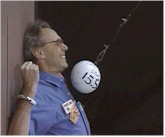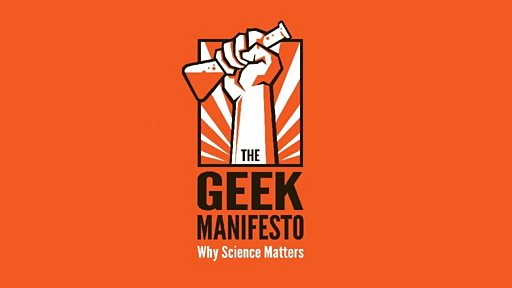Monday 4 November 2013
Soton Astrodome Blog: Astronomy Outreach News Update
Soton Astrodome Blog: Astronomy Outreach News Update: The astrodome school visits are managed by Dr. Sadie Jones and a team of Postgraduate and Undergraduate astronomy students. The PhD (awe...
Sunday 13 October 2013
Gaia: Mission Non-trivial
The Global Astrometric Interferometer for Astrophysics. Rolls off the tongue, doesn't it? Gaia is the newest space telescope, soon to be launched by the European Space Agency.
In Greek mythology, Gaia was the "great mother of all... creator and giver of birth to the Earth and all the Universe". An apt name, then, for the craft whose mission is to map our home galaxy to unprecedented levels of precision. It will pinpoint approximately a billion stars in our galaxy, precisely measuring their distances from us by using the parallax method, whereby the apparent movement of a nearby star with relation to distant background stars is measured as an angle, allowing the distance to be found by trigonometry. Simple.
|
Saturday 31 August 2013
BOOK CLUB: For The Love Of Physics
August's book club recommendation is Walter Lewin's For The Love Of Physics. Walter Lewin is a man I had buckets of respect and admiration for the first time I ever saw his lectures online on MIT's (MA Institute of Technology) open courseware website. That was back when I was studying A levels and had just decided to read Physics at university. I was given his book for Christmas by my mum, and on reading it my respect for him could only grow.


In his book, he takes you on a journey through physics. He tells the story of how one man fell in love with it, encouraging you to do the same, be it for the first time, when your eyes are initially opened to the magic of science, or allowing you to fall all over again after the frustration of exams or endless failed experiments or thesis writing has turned you bitter. The journey he takes you on is also incredibly personal, detailing what it was like to grow up in the Netherlands during the Second World War, and what his life is like now.
I would say with confidence that I don't think any lecturer or teacher has ever been more loved and appreciated by their students. And he has so many; he has affected the lives of not just those who have been in his classes in Cambridge, Massachusetts, but worldwide (including me, here in England!). This is with good reason. He is, simply the best. It is very easy to make new, ground-breaking science exciting to people, but to make the core, fundamental "boring background concepts" seem magical the way Walter Lewin does takes a real gift.
You will be enthralled by all the little everyday things you previously took for granted. Lewin is an especial lover of rainbows and the wonders of light. I keep this book with me somewhere I can always see it, whether I'm at home or in my student house, and occasionally reread it, just to remind myself why I love what I'm doing, and what it really means to me.


In his book, he takes you on a journey through physics. He tells the story of how one man fell in love with it, encouraging you to do the same, be it for the first time, when your eyes are initially opened to the magic of science, or allowing you to fall all over again after the frustration of exams or endless failed experiments or thesis writing has turned you bitter. The journey he takes you on is also incredibly personal, detailing what it was like to grow up in the Netherlands during the Second World War, and what his life is like now.
I would say with confidence that I don't think any lecturer or teacher has ever been more loved and appreciated by their students. And he has so many; he has affected the lives of not just those who have been in his classes in Cambridge, Massachusetts, but worldwide (including me, here in England!). This is with good reason. He is, simply the best. It is very easy to make new, ground-breaking science exciting to people, but to make the core, fundamental "boring background concepts" seem magical the way Walter Lewin does takes a real gift.
You will be enthralled by all the little everyday things you previously took for granted. Lewin is an especial lover of rainbows and the wonders of light. I keep this book with me somewhere I can always see it, whether I'm at home or in my student house, and occasionally reread it, just to remind myself why I love what I'm doing, and what it really means to me.
I don't think I could ever urge you to read any book more
PS. Please post comments!
Wednesday 31 July 2013
BOOK CLUB: The Geek Manifesto
Welcome to the launch of the Soton Physoc Outreach book club. Each month we will recommend a science-related book, starting this month with Mark Henderson's The Geek Manifesto: Why Science Matters.

As Henderson details in the introductory chapter, we have an opportunity to "embed critical thinking more deeply in the political process." The book seeks to suggest how we can rise to this challenge, stating that "precisely what politicians think is less important than how they think."
In the following eight chapters, he presents his arguments for "why science matters to..." politics (voting), government (policies), the media, economics, education, justice, medicine and the environment. A true scientist, Henderson encourages us to question what we are told, and he presents strong evidence to support his arguments - references included so that you can see for yourself.
Every page I read had me saying "Yes! You're so right! Why don't people see that?!" and if you're half as much a geek, you'll agree. One person who agreed with me is Dave Watts, who started a pledge to send every MP and Welsh Assembly Member a copy, which was carried out just over a year ago. Mark Lorch suggests sending a letter to your MP to see if they've read it and what impact is has had on them - some people have done so, and received feedback.
If you've read it, post any thoughts in the comments below. If you haven't, why are you sitting there still? Go find a copy!
Follow mark henderson on twitter @markgfh

As Henderson details in the introductory chapter, we have an opportunity to "embed critical thinking more deeply in the political process." The book seeks to suggest how we can rise to this challenge, stating that "precisely what politicians think is less important than how they think."
In the following eight chapters, he presents his arguments for "why science matters to..." politics (voting), government (policies), the media, economics, education, justice, medicine and the environment. A true scientist, Henderson encourages us to question what we are told, and he presents strong evidence to support his arguments - references included so that you can see for yourself.
Every page I read had me saying "Yes! You're so right! Why don't people see that?!" and if you're half as much a geek, you'll agree. One person who agreed with me is Dave Watts, who started a pledge to send every MP and Welsh Assembly Member a copy, which was carried out just over a year ago. Mark Lorch suggests sending a letter to your MP to see if they've read it and what impact is has had on them - some people have done so, and received feedback.
If you've read it, post any thoughts in the comments below. If you haven't, why are you sitting there still? Go find a copy!
Follow mark henderson on twitter @markgfh
Thursday 25 July 2013
Learning to speak 5-year-old
Outreach top tip: getting the balance between accuracy and simplicity is important.
Whilst at Intech Science Centre over summer, part of my work involves presenting science shows to the public, and putting together the new shows we're going to be doing over summer. Today was my first live show and, thankfully, everyone there seemed to engage and enjoy it. When I told them to shout the answers, they shouted out "Gravity!", "Friction!", "Negative charges!" and every time I asked for a volunteer, I had 15 or 20 hands in the air out of a 30 or 40 strong audience (we only have a small seating area). The key to this was making sure that I made it simple enough for the 5 year-olds but interesting enough for the 15 year-olds and, importantly, correct and accurate, so that I didn't stop and correct myself whilst I spoke. Or get corrected by a knowledgeable parent in the front row.
Tomorrow we don't have any shows to do as on Fridays in the school holidays we have falconry displays given by a guy from outside of the centre. Instead we're spending our time putting together the new shows we're introducing starting next week (but I'm hoping to be able to sneak off at some point to see the birds). With our Colourful Chemistry show, we've made the demonstrations as visual and exciting as we can, and even added in a little double-act skit when Laura asks me (in charge of webcamming it) for a drink of water and I pour a clear liquid into a seemingly empty glass and it turns pink! (Hint: phenylphthalein - it's always a hit). She hands it back to me, and I pour another clear liquid in (vinegar) and her drink turns clear. We then point out the indicator, and the acids and alkalis and then bring out the red cabbage indicator. This is another of our engaging science tricks - making it do-able at home.
The other shows we have yet to put together include Solids, Liquids, Gases (I'm still trying to convince our director that it's fine to pour liquid nitrogen on people, but I don't think I'm gonna push it past H&S this time - maybe we can just pour it on each other) and All About Air, in which we make marshmallows expand in the vacuum pump - fun, visual stuff. And as Laura's a zoologist by nature, we're also making a show about animal poo - we know what 5 year-olds want!
So, accuracy = important; simplicity = important; FUN = most important of all to Laura and I on caffeine - the equivalent of any 5 year-old.
The other shows we have yet to put together include Solids, Liquids, Gases (I'm still trying to convince our director that it's fine to pour liquid nitrogen on people, but I don't think I'm gonna push it past H&S this time - maybe we can just pour it on each other) and All About Air, in which we make marshmallows expand in the vacuum pump - fun, visual stuff. And as Laura's a zoologist by nature, we're also making a show about animal poo - we know what 5 year-olds want!
So, accuracy = important; simplicity = important; FUN = most important of all to Laura and I on caffeine - the equivalent of any 5 year-old.
Subscribe to:
Posts (Atom)

